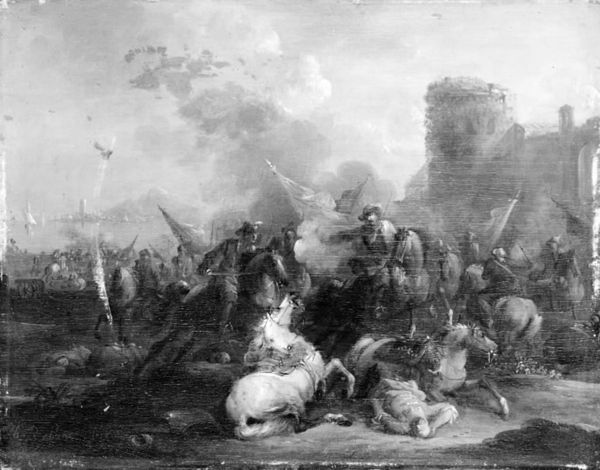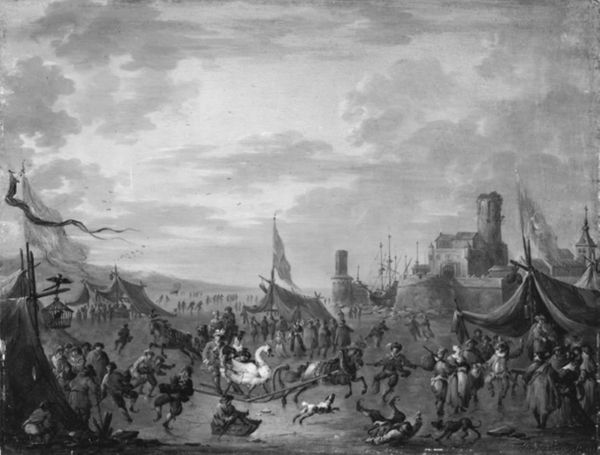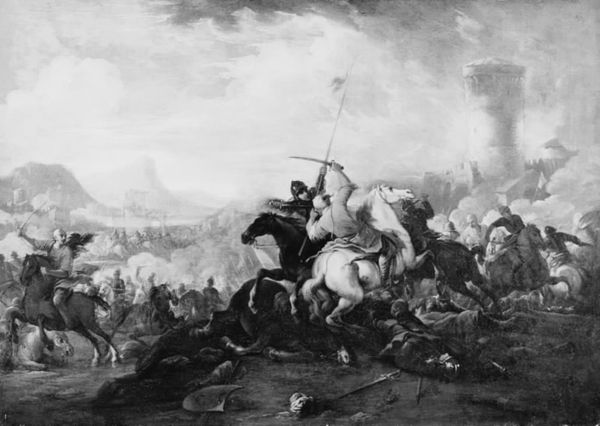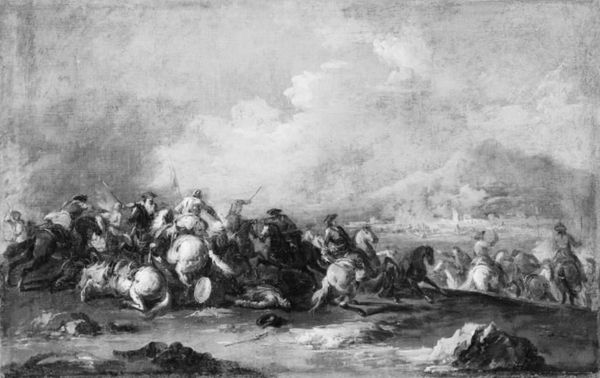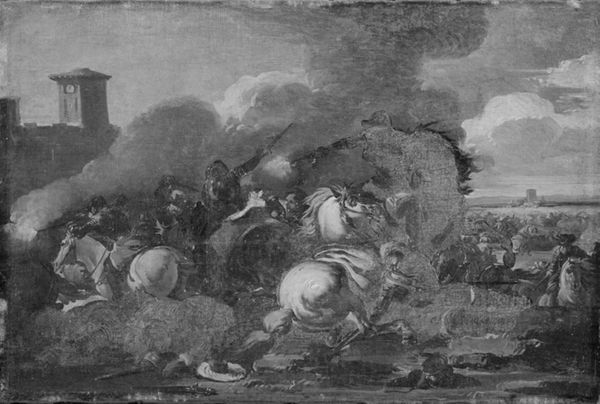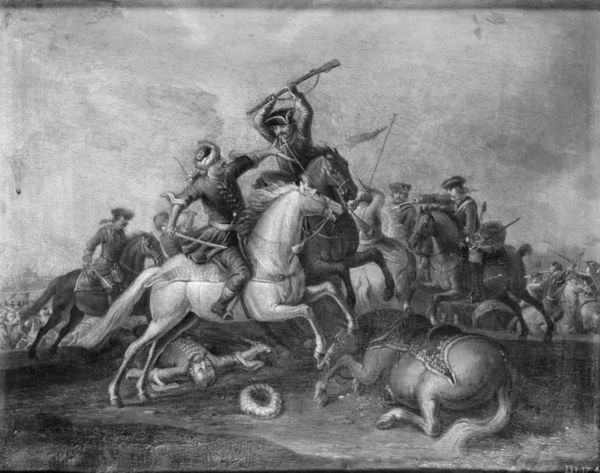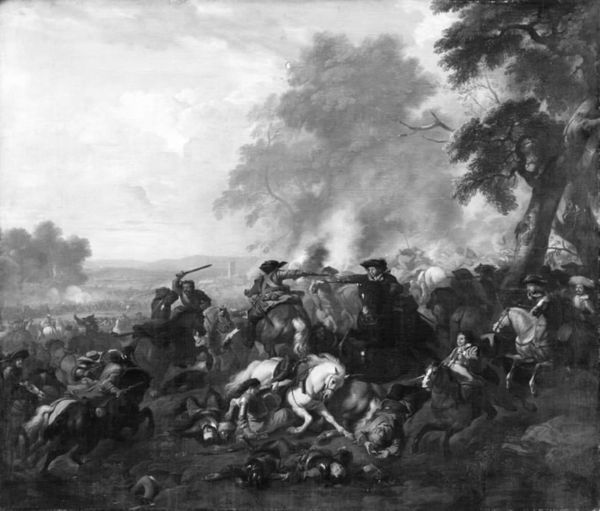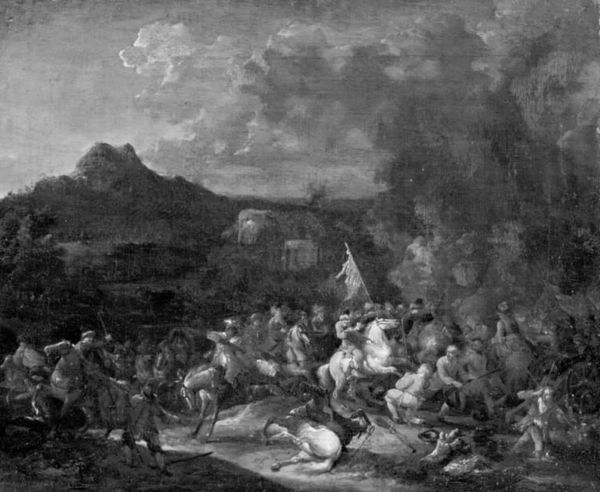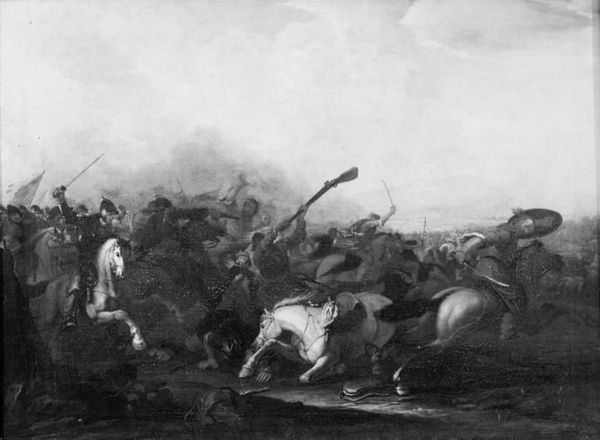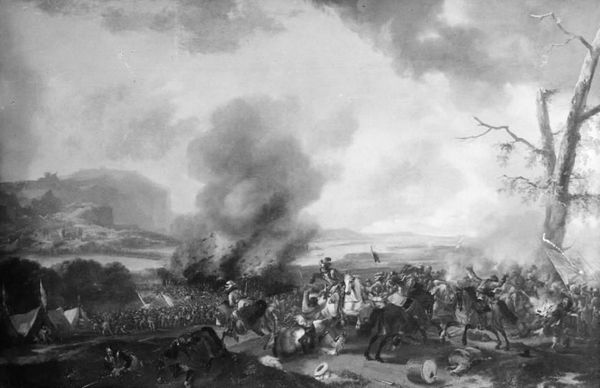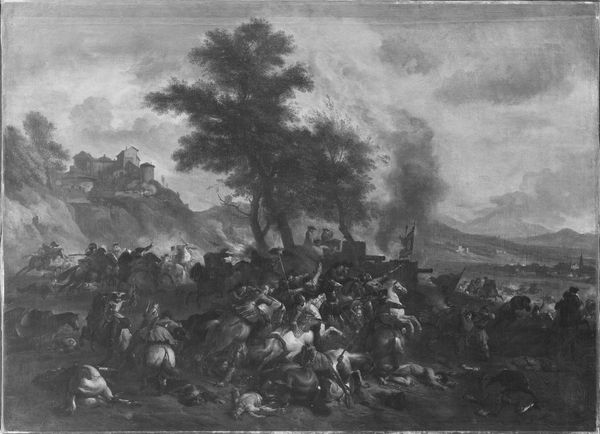
painting, oil-paint, wood
#
baroque
#
painting
#
oil-paint
#
landscape
#
charcoal drawing
#
figuration
#
wood
#
history-painting
#
monochrome
#
charcoal
#
graphite
#
monochrome
Dimensions: 13.5 cm (height) x 17.5 cm (width) (Netto)
Curator: Let’s spend some time with “Cavalry Skirmish,” an oil painting by Arnold Frans Rubens dating from around 1709 to 1719. What strikes you most immediately? Editor: It's a scene steeped in a kind of hazy chaos. Even in monochrome, I feel the energy of the clash – a raw, immediate sense of impact. The composition draws me in but, oddly, I keep noticing the surface quality of the paint itself. Curator: Absolutely. There's an incredible layering and build-up. Notice how Rubens achieves such dynamism through a very evident manipulation of his materials. You can almost feel the labor involved. Beyond that materiality, does it provoke any emotional response? Editor: It makes me think about how historical painting so often abstracts and glorifies. Looking closely at "Cavalry Skirmish", though, I'm struck by the bluntness of conflict: horses falling, the exhaustion. Is there even really a victor shown? There’s certainly no gleam or obvious grand narrative on offer. Curator: He gives us so much palpable struggle instead. It almost humanizes the genre by revealing the grit, the physicality – a real material cost of battle, if you will. Beyond that, the choice to present it so starkly does add to its unique visual weight. We should not forget wood as a central feature and core of the structure that gives such solidity to the subject matter, where even destruction become aesthetic and pleasing. Editor: Thinking about it that way, it's easy to overlook the kind of craftsmanship behind what seems like impulsive brushstrokes. Preparing pigments, layering oil... all that feeds directly into the finished piece and helps us read its themes about war and history. The sheer materiality of conflict itself becomes more explicit in the piece. Curator: Perhaps there’s even an irony: that something depicting devastation is so carefully and laboriously crafted. This all becomes very poignant if we pause to realize we can see traces of damage in the paint layer. To contemplate its own preservation, time takes its tool, it offers a new poignant layer to our reflections on war. Editor: It shifts the piece. It is not just of its time but, in fact, has been subjected to it—offering us the opportunity to question the legacy it creates. Curator: Precisely. In short, "Cavalry Skirmish" reminds us that what remains always tells a new story beyond intention. It is the raw impact and physical evidence which keeps its artistic energy in motion through time. Editor: Agreed; between subject and construction, "Cavalry Skirmish" truly bridges a complex and intriguing history.
Comments
No comments
Be the first to comment and join the conversation on the ultimate creative platform.
